The HypoAir Bi-Polar is a whole-house purification system that uses needlepoint bipolar ionization technology to purify the air in your home, neutralize odors and mold spores, and sanitize surfaces to kill germs.
We installed the HypoAir Bi-Polar filtration system in our 2,600 square-foot home in 2021, and have since noticed a dramatic improvement in air quality.
In this HypoAir review, I’ll explain why we decided to install a whole-house air purification system, why bipolar ionization is safe and effective and why we chose HypoAir over the other products on the market. Plus, I’ll share the results of the tests we conducted to measure our home’s air quality before and after installing the HypoAir.
HypoAir Bi-Polar Whole House Air Purifier
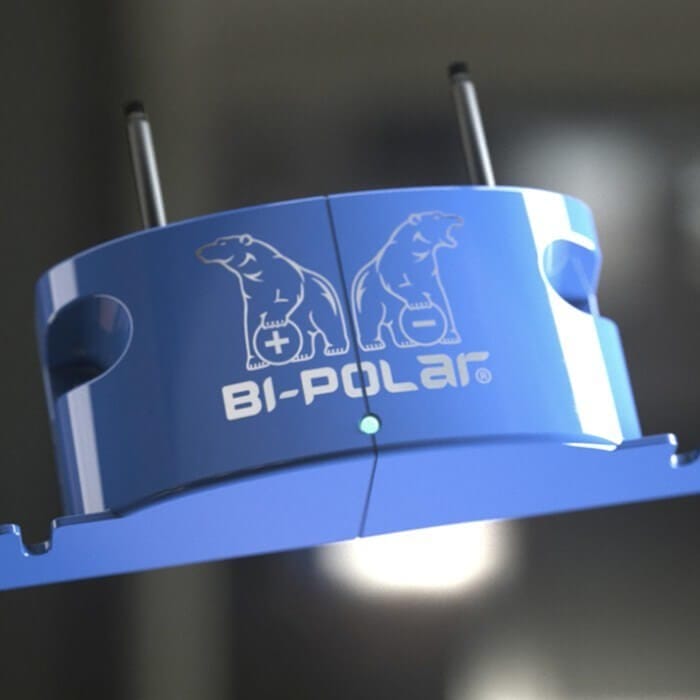
Summary
The HypoAir Bi-Polar is a whole-house purification system that uses ionization technology to purify the air in your home, neutralize odors and mold spores, and sanitize surfaces to kill germs. We have noticed a dramatic improvement in our home’s air quality after installing the HypoAir, as demonstrated by an independent before and after test.
Why Indoor Air Quality Is Important For Your Health
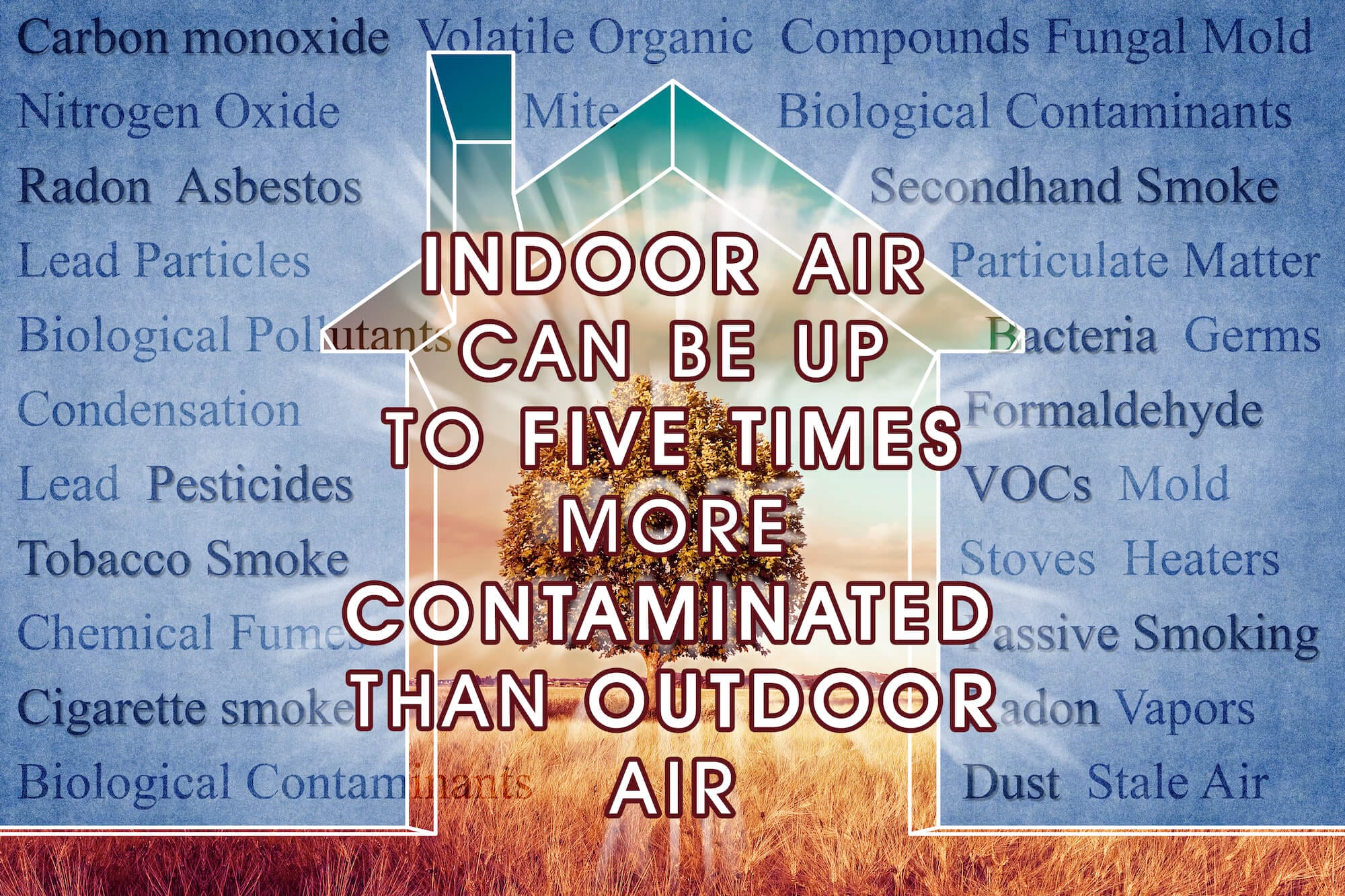
Growing up in Austria, my parents would often say, “let’s open the windows to get some fresh air in” — as if the air inside our home wasn’t fresh or clean.
They were on to something, because the quality of the air inside our homes isn’t always as high as we’d like to think. In fact, it’s often contaminated with allergens, dust, pet dander, volatile organic compounds (VOCs) from paint and/or your gas-burning stove or fireplace, and numerous other odors.
In addition to the pollutants mentioned above, mold and mildew are also common and potentially hazardous substances that can dramatically decrease the air quality in your home and cause an array of health issues including allergic reactions, asthma, coughing, eye irritation, headaches or migraines and sinus congestion.
Depending on when your home was built, there are also some other factors (related to how well the home is insulated) that can negatively influence air quality. For example, older homes tend to be “leaky” and thus often let in polluted outside air (which is especially problematic during pollen season). That leakiness can also allow dusty air from an attic, crawlspace or unfinished basement to infiltrate the home.
Newer and more energy-efficient homes are better sealed to reduce the rate of air infiltration and to stop unconditioned air from outside entering the home. While that’s great from an energy efficiency perspective, it’s less-than-ideal in the context of letting humid air (caused by cooking, drying laundry, taking a shower and other common activities) escape. The trapped humidity can provide a breeding ground for mold and mildew.
Dedicated air exchangers mitigate that issue, but most homes in the United States aren’t equipped with such devices. As a result — and depending on where you live — the outdoor air might be cleaner and healthier than the air inside of your home.
In fact, here’s what the EPA has to say about the topic of indoor air quality:
EPA studies of human exposure to air pollutants indicate that indoor levels of pollutants may be two to five times — and occasionally more than 100 times — higher than outdoor levels.
Source
Why We Decided to Invest in a Whole-House Purification System

In early 2020, we moved into an older home (built in 1980) that has an unfinished basement and attic. While I didn’t have any concerns about its energy efficiency — after all, the entire attic is insulated with spray foam to reduce air leakage via the roof — we quickly noticed that the home was dustier than our previous home.
Upon closer inspection, I realized that most of the HVAC registers weren’t properly sealed, allowing unconditioned and unfiltered air to infiltrate from the unfinished basement. But considering that the “air pollution” in our home wasn’t causing any noticeable health issues, we decided not to take any further action.
But two years later, I started suffering from mild yet frequent headaches at night. And after ruling out everything else I could think of, I suspected a problem with the air quality in our home — or maybe even mold.
Consequently, I reached out to Healthy Air USA — an air quality engineering firm that conducts detailed air quality assessments — to check out our home and look for signs of mold.
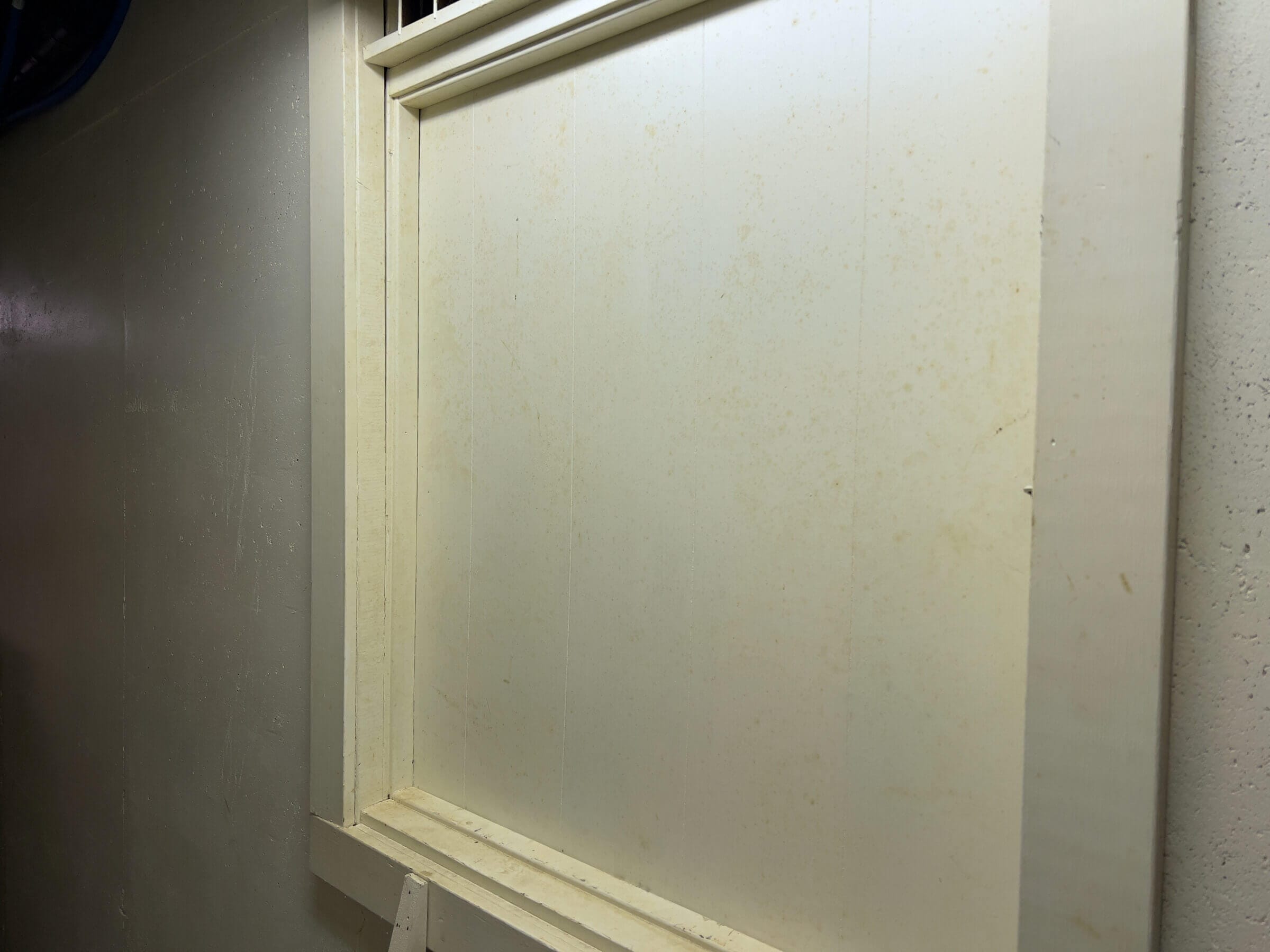
Fortunately, the incredibly knowledgeable technician conducting the assessment was unable to find any signs of mold that were a concern — just some areas with harmless mildew on the lower level of the house and the unfinished basement.
However, the final report showed that most of the rooms in our home had much higher particle counts than what Healthy Air USA recommends. In other words, the air in our home was polluted by tiny particles above the levels that are considered healthy.
Note: To avoid any conflict of interest, Healthy Air USA wasn’t involved in mitigating any of their findings.
As a result, my wife and I decided to install an air purification system that we could hook up to the central HVAC system in order to cover the entire home.
Coincidentally, when I attended a biohacking conference in 2021, I stumbled across HypoAir, a company that makes commercial-grade air purifiers that use needlepoint bipolar ionization technology that can also be used in residential settings.
After conducting some research, I concluded that the bipolar ionization air purifier from HypoAir was indeed the best solution for us because it seemed to be incredibly effective and required very little ongoing maintenance (since there are no replacement filters that need to be changed, and which can increase the total cost of ownership over time).
Instead of a filter, the HypoAir system relies on polarized ions. These are electrically charged particles that are highly reactive and can neutralize viruses, germs, mold, bacteria and other pathogens. Additionally, they cause smaller particles to bond together, thus either making those particles large enough for our regular furnace filter to trap them or making them so big they fall out of the air and onto the floor (thus reducing the likelihood of us inhaling them.)
Note: I found out later that the headaches were caused by some sort of sensitivity or allergic reaction to liquid dairy products, and particularly to raw milk. As soon as I stopped consuming milk, my headaches went away.
How Does Needlepoint Bipolar Ionization Work?
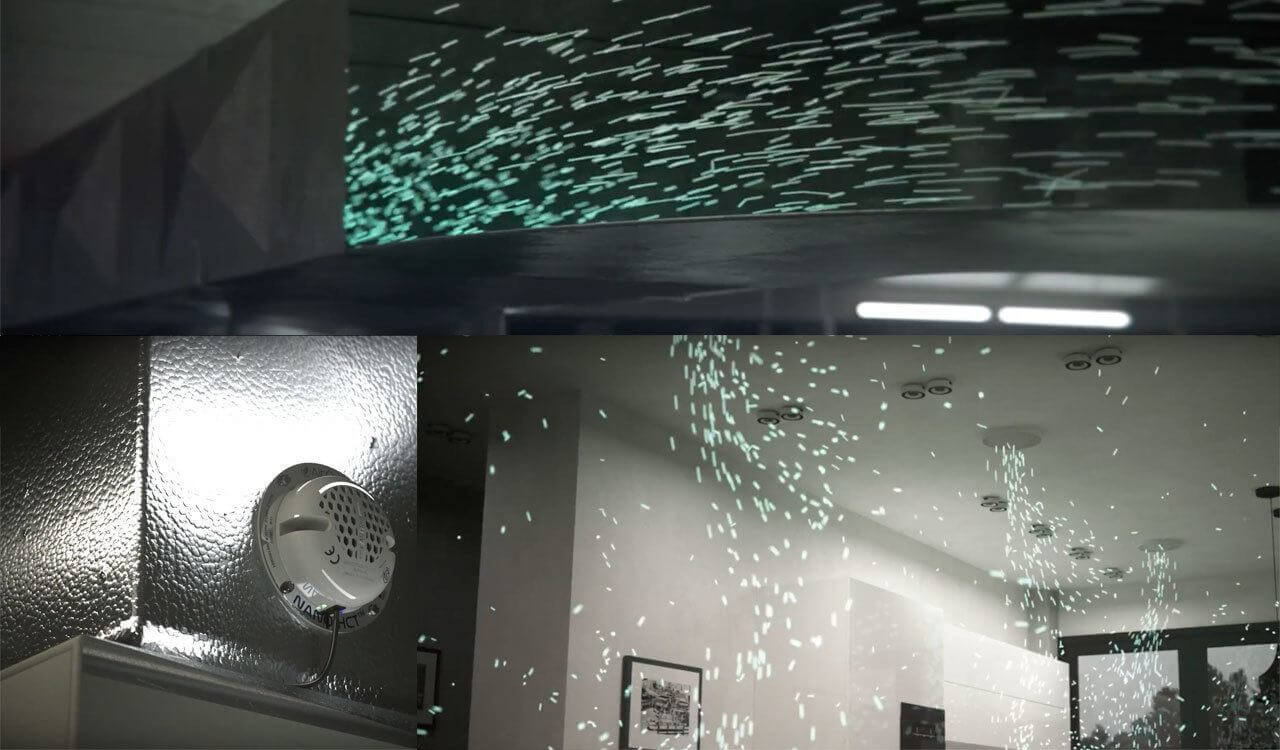
If you think back to your high school physics classes, you might remember that ionization refers to the splitting of molecules into positively or negatively charged atoms that either have an extra electron in the outer orbit or are missing one.
For example, if you were to split the sodium chloride (NaCl) molecule — which is regular table salt — into its individual atoms, you’d end up with positively-charged sodium and negatively-charged chloride ions.
In the context of air purification, there are different ionization technologies on the market. The most advanced one is called needlepoint bipolar ionization, which splits H2O molecules (from water vapor in the air) into positively-charged hydrogen (H+) and negatively-charged oxygen (O2-) ions.
What’s interesting is that this process of creating ions is something that happens in nature all the time. For example, when water evaporates, ions are created in the same manner as described above.
When these ions are created inside of your HVAC unit using a device like the HypoAir Bi-Polar, they get transported through the ductwork and into each room of the house, where they have enough time to interact with other particles in the air and on surfaces — including odors, volatile organic compounds (VOCs), viruses, bacteria and more.
Specifically, the ions attach to other particles and bond them together to form clusters (called agglomeration), thus making them big enough to either get trapped by the HVAC system’s air filter or to get so heavy that they literally fall out of the air, thus reducing the chances of being inhaled.

As far as their effects on germs are concerned, ions like to steal the hydrogen atoms from the protein-based shells of bacteria and viruses, thus rendering them ineffective.
Most bacteria, mold and viruses have proteins attached to their outer shells that act like keys, allowing them to infect or interact with other cells. In the case of a virus, taking away the hydrogen atoms renders it incapable of infecting other organisms. In the case of bacteria and mold, removing their hydrogen atoms destroys their cellular structure, causing the pathogen to die.
What’s so fascinating about bipolar ionization technology is that unlike traditional air filters, it doesn’t require that polluted air pass through. Instead, these devices leverage the HVAC unit’s blower fan to turn water vapor into ions that are then pushed through the ductwork into every room of the house.
That means bipolar ionization can also sanitize surfaces like kitchen counters, toilet seats and doorknobs without requiring purification devices in each room.
HypoAir Bi-Polar Whole House Air Purifier Review
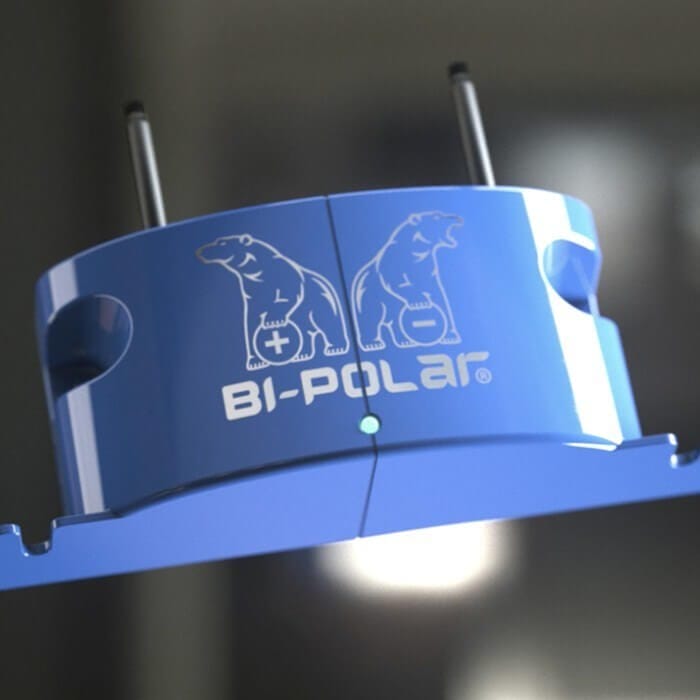
Pros
- Highly effective at removing allergens, germs, odors and other pollutants.
- Removes bacteria and viruses in the air and on surfaces.
- Destroys spores and inhibits mold growth.
- Easy to install.
- Low maintenance.
Cons
- Depending on the size of your home, you might need more than one system.
- Price.
The HypoAir Bi-Polar is a whole-house air purification system that rids the air inside your home of allergens and contaminants while requiring little to no ongoing maintenance. Besides purifying the air, the device also provides surface sanitation by destroying bacteria, viruses and other pathogens on kitchen counters, doorknobs and other areas in your home.
The HypoAir Bi-Polar is a relatively small device (the size of your hand) that you have to install near the blower fan of your furnace to create ions from the air flowing past it.
Technically, the device leverages two carbon brushes (called needlepoint ionizers) that convert water vapor into a balanced ratio of enough negative and positive ions to purify and sanitize the air inside a 2,400 square foot home.
Our home is 2,600 square feet, and while we could have stacked multiple devices to cover the additional 200 square feet, we decided to add a standalone air purifier (a combination of a HEPA filter, UV sanitation and bipolar ionizer) instead.
HypoAir still makes the standalone air purifier we have (the HypoAir Snowflake), but it sometimes goes on backorder. If you need a solution right now and don’t want to wait, the HypoAir Germ Defender offers similar features in a different (smaller) form factor.
Based on the before and after air quality tests we conducted, that combination has been incredibly effective at keeping our indoor air healthy.
Installation

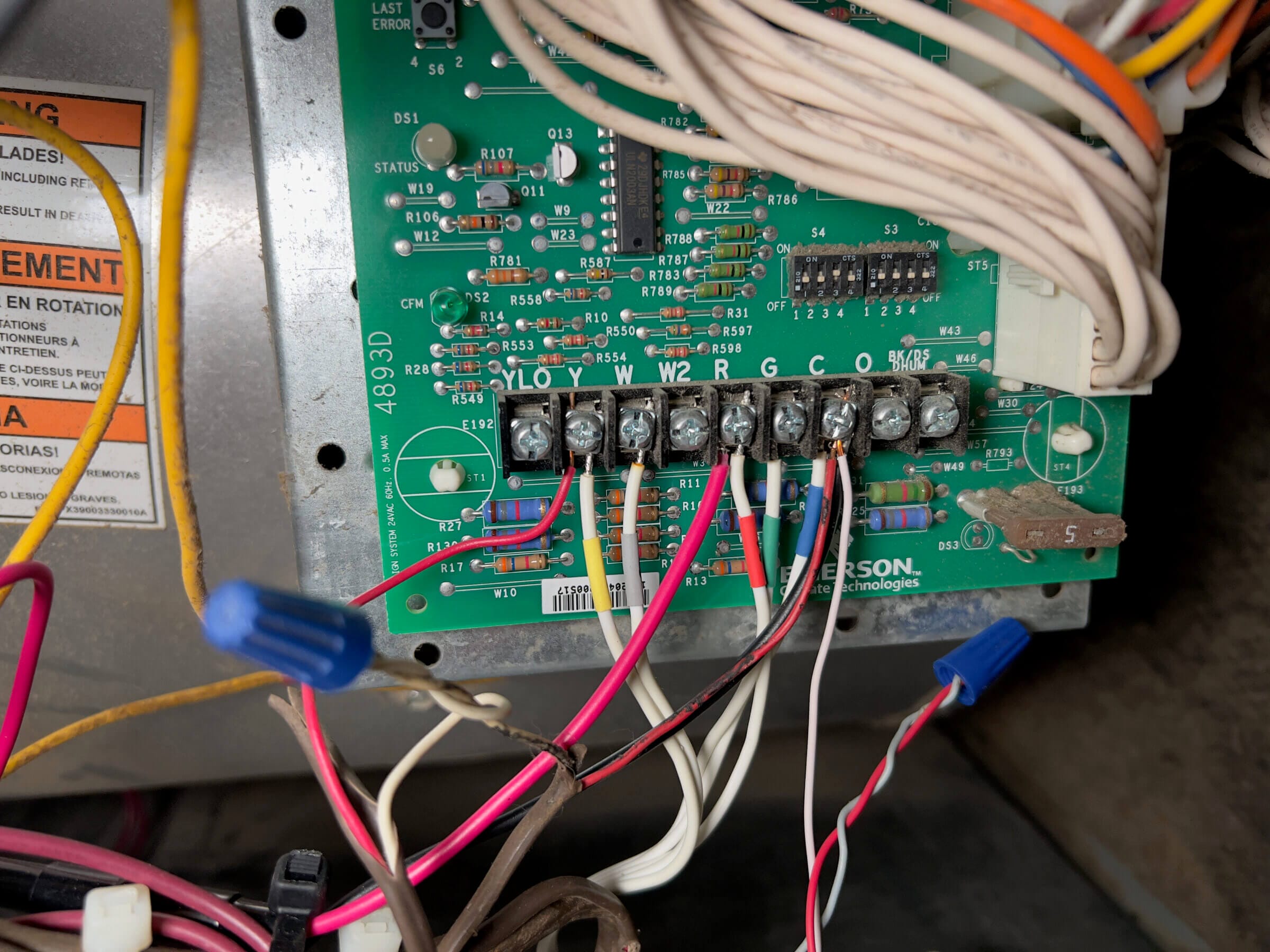
For the HypoAir Bi-Polar air purifier to do its job, I had to install it inside of our HVAC unit. While that sounded like a daunting task — after all, I’m not a trained HVAC technician — the installation turned out to be fairly easy.
That’s because the Bi-Polar housing has built-in magnets that make it easy to attach the air purifier to the housing of the fan blower. Plus, it can draw power directly from the HVAC’s control board.
Before I got started with the installation, I made sure the HVAC system was powered down by turning off the breaker switch to avoid electrocuting myself or damaging the equipment. Once I ensured the HVAC control board didn’t have power, I attached the Bi-Polar unit to the fan blower housing.
Next, I ran the two power supply wires from the Bi-Polar to the control unit of our HVAC system and clamped them onto the C (Common) and R (Hot) ports. Alternatively, I could have also gotten a separate 12V transformer but I figured borrowing some juice from the HVAC control unit was easier.
Once everything was hooked up, I powered the HVAC system back up and made sure the green status LED on the Bi-Polar came on — an indication that the system was operational.
The entire installation took less than 10 minutes, even though I don’t have any experience with HVAC systems. But if you’re not confident about your ability to install the Bi-Polar system, you can always call your HVAC contractor.
Maintenance
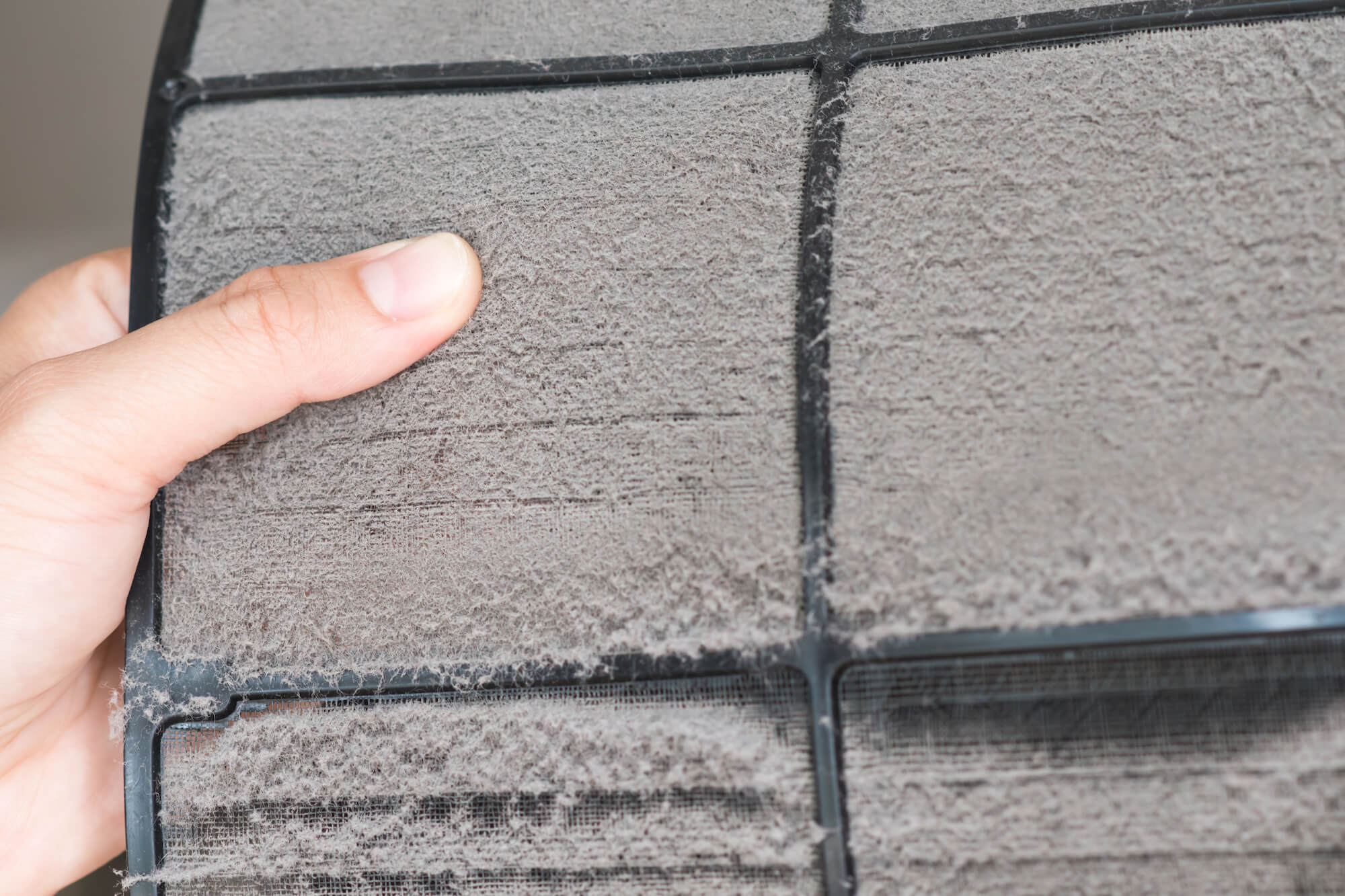
One of the reasons why I decided to install the HypoAir Bi-Polar was the fact that it requires very little ongoing maintenance. In fact, the only thing I do every couple of months is use an old toothbrush to clean the tips of the carbon brushes. You can also use a can of compressed air, but all I had was an old toothbrush and that did the trick.
Beyond that, there is nothing you have to do to maintain the system.
Limitations

Based on the scientific research, third-party test results and our own tests, the HypoAir Bi-Polar is incredibly effective at purifying indoor air by removing germs, odors, allergens and other contaminants.
However, bipolar ionization doesn’t filter particles out of the air. In other words, you will still have to rely on the filter in your HVAC system to remove the particles the ionizer has neutralized. We use a hypoallergenic, antimicrobial and carbon-coated air filter from Lennox with our HVAC unit to filter out as many particles as possible.
You may also find more “dust” on your floors and furniture, because one of the ways the ionizer removes particles from the air (to prevent you from inhaling them) is to make them group together to form larger particles that are heavy enough to fall to the floor or other surfaces.
Last but not least, I should mention that bipolar ionization doesn’t help remove pet dander from your home. However, bipolar ionization does get rid of pet odors.
We got a German shepherd in November of 2021, and I was concerned that our home might start smelling like the dog. Fortunately, the HypoAir Bi-Polar is doing such an excellent job at neutralizing pet odors that you can’t even tell (smell) that a large dog lives in our house.
Effectiveness/Test Results
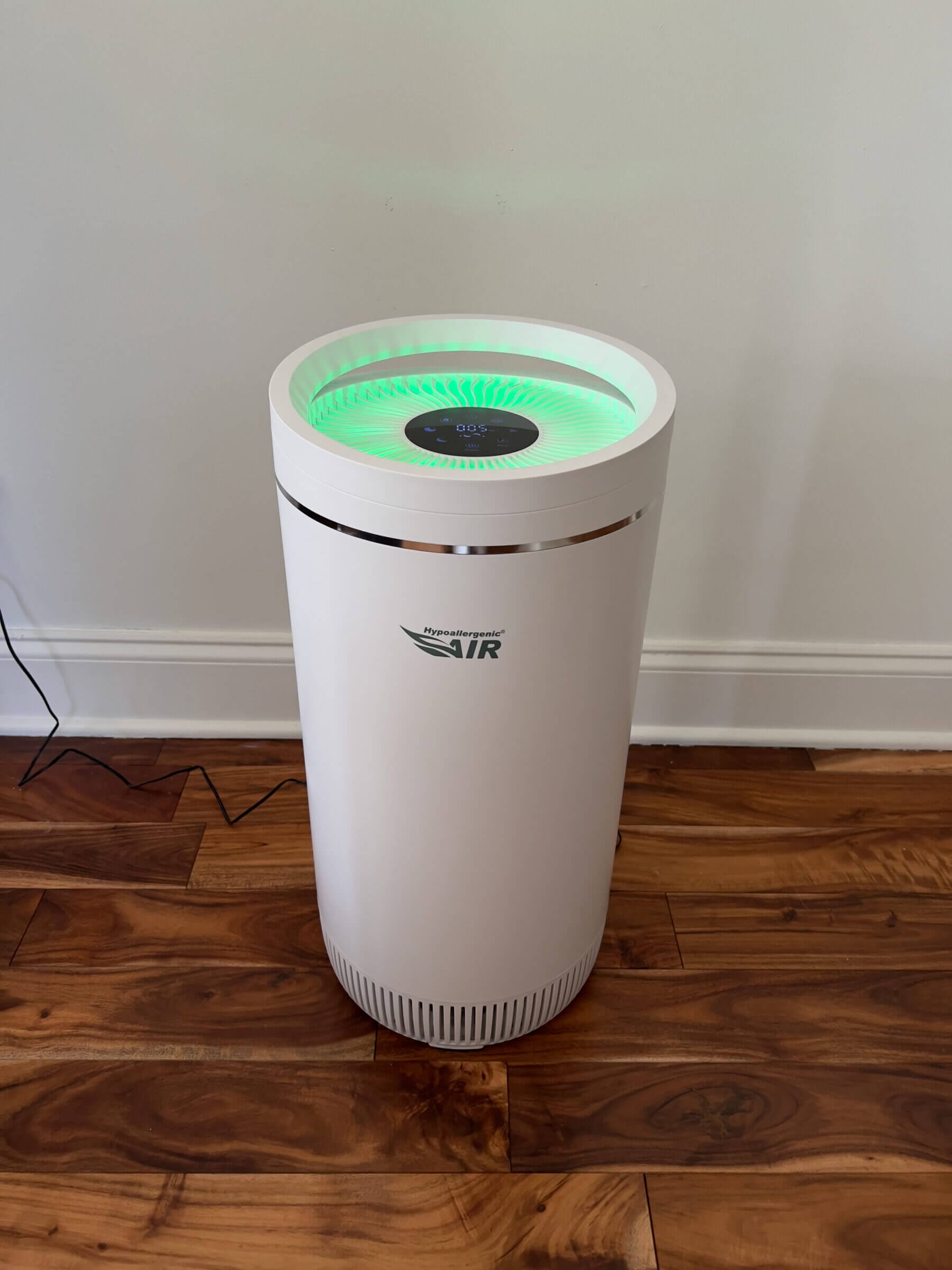
Before we installed the HypoAir Bi-Polar system, we had Healthy Air America come out to perform a detailed indoor air quality assessment.
The technician who performed the tests measured humidity and air contamination in every room of our home.
Specifically, he assessed the number of particles in the 0.3 and 2.0 micrometer (micron) range. That’s because, according to the EPA, particles that are 10 micrometers in diameter or smaller pose the greatest problems (since they pass through the nose and throat and enter the lungs).
The tables below show the before and after results of those air quality assessments.
| 2021 | 2022 | Improvement | |
|---|---|---|---|
| Guest room | 217,078 | 251,630 | -16% |
| Kids’ room | 233,700 | 311,730 | -33% |
| Master bedroom | 464,512 | 223,740 | 52% |
| Office | 397,826 | N/A | N/A |
| Dining room | 452,704 | 318,890 | 30% |
| Living room | 495,831 | 318,890 | 36% |
| Kitchen | 426,284 | 302,220 | 29% |
| 2021 | 2022 | Improvement | |
|---|---|---|---|
| Guest room | 2,407 | 1,600 | 34% |
| Kids room | 4,417 | 2,320 | 47% |
| Master bedroom | 3,625 | 600 | 83% |
| Office | 1,614 | N/A | N/A |
| Dining room | 4,021 | 2,190 | 46% |
| Living room | 6,456 | 2,040 | 68% |
| Kitchen | 4,417 | 1,990 | 55% |
As demonstrated in the two tables above, we’ve seen pretty significant improvements — especially in reducing pollutants in the 2.0 micron range.
However, I should mention that some of our rooms had old carpet (that we have since removed), including the kids’ room; walking over that carpet (while performing the air quality assessment) may have stirred up pollutants that influenced the test results.
I suspect that’s what happened in the kids’ room, and is the reason why the second test showed higher pollution in the 0.3 micron range than the first test, despite having seen a reduction in particle counts in almost every other room.
Additionally, I strongly believe that the standalone air purifier we placed in our master bedroom contributed to the incredible improvement in air quality in that room.
The other improvement we’ve noticed is related to odors, and specifically a lack of “dog smell.”
Whenever we have guests over, we ask them if they can smell that we have a dog, and the answer is always no. That’s incredible, because German shepherds are relatively large dogs and you can typically smell if one is in the house.

Additionally, I’ve noticed that I no longer smell the odors I used to smell when returning home from a trip. You’ve probably noticed that you pick up on certain smells after having been away from home that you wouldn’t normally notice (because you’re so used to them).
The last time we returned from a trip, the house smelled neutral and I couldn’t pick up that distinct odor I used to smell.
Based on these results and the fact that we have no discernable odors in our home (from our dog or otherwise), I’m convinced that the HypoAir Bi-Polar system is doing an excellent job at keeping our air clean.
Results You Can’t See
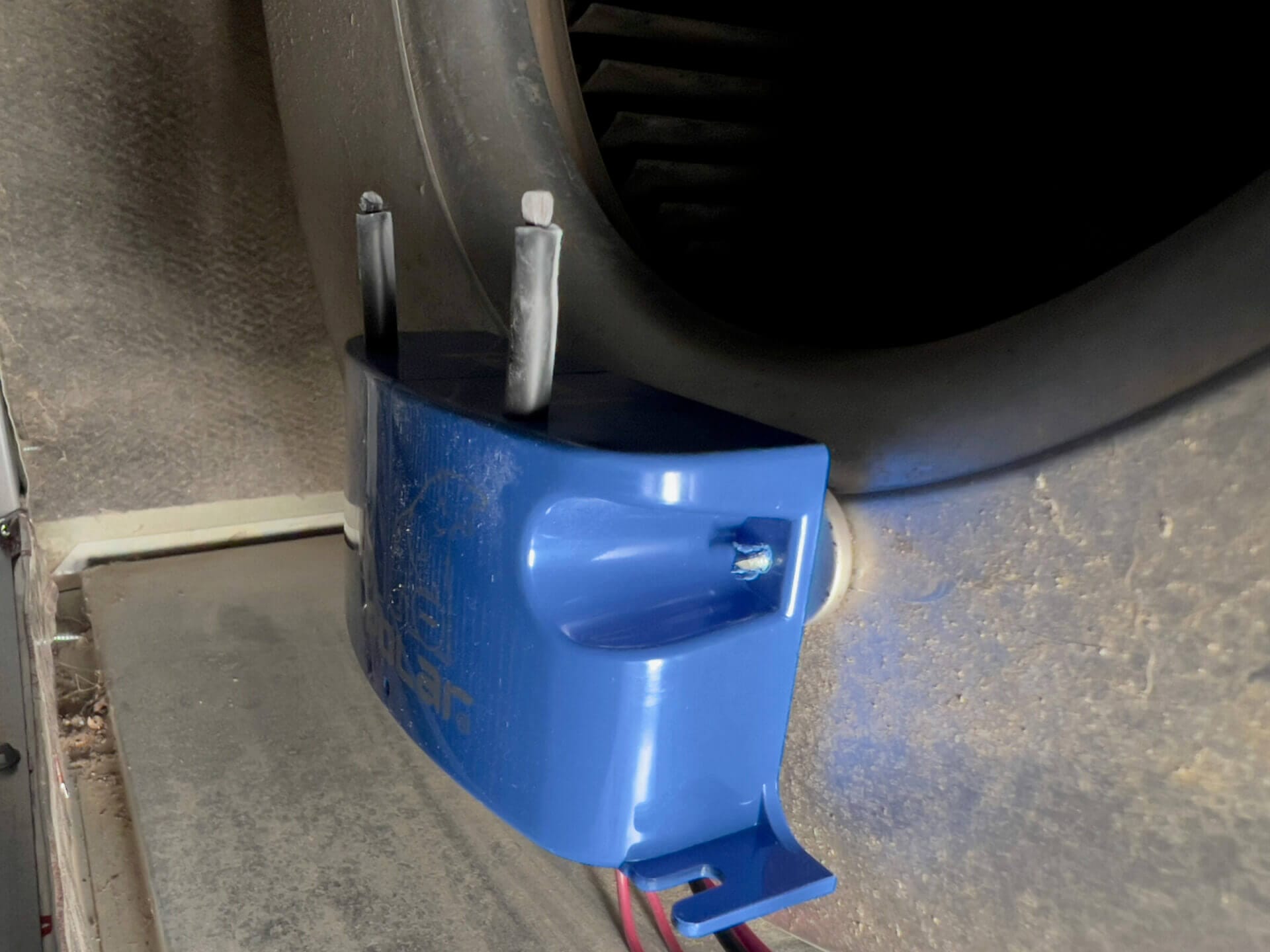
Besides the reduction in pollutants and particles we could measure easily, there are other air quality issues that were more difficult to measure but which might be even more important to deal with than dust and odor. Specifically, I’m referring to spores from mold and mildew.
The good news is that bipolar ionization can not only inhibit mold growth but also kill airborne spores before they can cause health issues.
Based on the air quality assessment we commissioned, we knew that the humidity levels in our home were higher than what’s considered ideal, and that there were some visible signs of mildew growth in both our unfinished basement and in the hallway between the kids’ room and the guest room.
As a result, we installed two dehumidifiers (one in our basement and one in our laundry room, which is adjacent to the two lower-level rooms) to further inhibit mold and mildew growth. Combined with the mold and mildew fighting capabilities of the HypoAir Bi-Polar air purifier, we’re confident that mold and mildew won’t be an issue in our home going forward.
Pricing
The HypoAir Bi-Polar whole-home air purifier costs $899.99. That’s a lot of money, but if you consider the fact that you probably won’t have to spend hundreds of dollars on labor to get it installed (because it’s so easy that you can do it yourself) and that there are no ongoing costs associated with replacement filters, it’s a reasonable investment.
In comparison, the whole-house humidifier we installed to increase the humidity in our home during the colder months of the year cost more than the Bi-Polar, mostly due to the labor cost involved in getting it installed and hooked up to the water supply and HVAC system.
Knowing how polluted our indoor air was before we had the Bi-Polar, and how little maintenance the system requires, I’m glad we made the decision to get it installed.
If you’re interested in purchasing the HypoAir Bi-Polar, you can use code MK10 to get 10% off your purchase.
Alternatives to Whole-House Units
If installing a whole-house bipolar ionization unit isn’t possible for you, HypoAir offers several alternatives:
- HypoAir Snowflake: An incredibly powerful unit that features H13 HEPA and activated carbon filtration, as well as a cold catalyst, ultraviolet light, and polar ionization to sanitize the air in large rooms. We have the Snowflake in our master bedroom.
- HypoAir Germ Defender: The Germ Defender is ideal for bathrooms, small bedrooms and medical facilities because it features strong biological and PM2.5 control with no replacement parts required. We installed an extra Germ Defender in our kids’ bedroom.
- HypoAir Air Angel Mobile: The Air Angel includes full polar ionization and AHPCO, allowing it to cover larger areas of up to 300 square feet. The Air Angel is ideal for when you’re traveling (e.g., in hotel rooms or in your car).
One thing I want to point out is that a single Germ Defender unit retails fro $149. However, you can get a six-pack for $400. So if you want to cover your entire home or — at least, several rooms in your home — I highly recommend the six-pack because it slashes the price per unit to $67.
HypoAir Bi-Polar vs. Other Air Cleaners
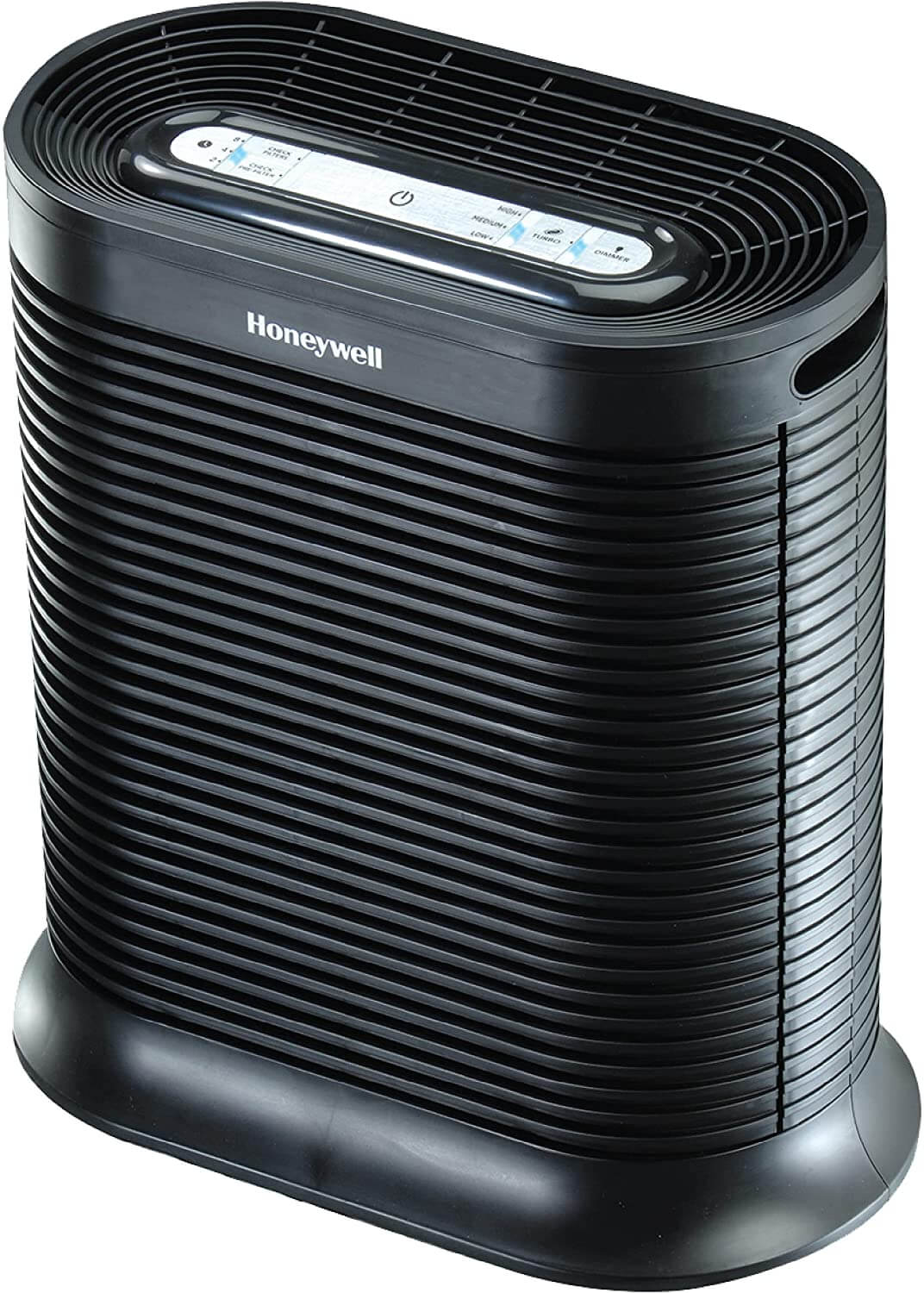
The HypoAir Bi-Polar and its underlying bipolar ionization technology has several advantages over other types of air purifiers.
| Bipolar Ions | Negative Ions | Carbon Filter | True HEPA Filter | |
|---|---|---|---|---|
| Maintenance effort | Low | Low | High | High |
| Reduces odors | ✓ | ✓ | ✓ | ✘ |
| Reduces VOCs | ✓ | ✓ | ✓ | ✘ |
| Reduces germs | ✓ | ✓ | ✘ | ✘ |
| Sanitizes surfaces | ✓ | Possible but ineffective | ✘ | ✘ |
| Coverage | Large areas | Small areas | Small areas | Small to large areas |
| Produces ozone | ✘ | ✓ | ✘ | ✘ |
| Effective against heavy VOCs and odors | ✘ | ✘ | ✓ | ✘ |
As you can see in the table above, bipolar ionization is superior to most other (consumer-grade) air purification technologies on the market.
Specifically, I appreciate that bipolar ions are relatively effective at removing and eliminating small dust particles, allergens, odors, VOCs and germs, both in the air as well as on surfaces.
I also like that the HypoAir Bi-Polar — unlike systems that leverage negative ions only — doesn’t produce ozone (which can damage your lungs), and that it requires very little maintenance to keep the system operating optimally.
However, it’s worth noting that in environments that experience heavy VOCs and odors, bipolar ionization isn’t the most effective mitigation method. Carbon air and photocatalyst filters that rely on ultraviolet (UV) light are more effective for those circumstances.
Frequently Asked Questions

Unlike air purifiers that rely on negative ions only, bipolar ionization doesn’t produce ozone. That’s a good thing, because while ozone has a number of health benefits when used properly, it’s dangerous for your lungs if you inhale it.
The HypoAir Bi-Polar is effective at destroying the following types of pathogens: SARS-CoV-2, E. coli, MERS coronavirus, TB (M Terrae), MRSA, C. difficile, VRE and more. You can check out the independent lab tests showing the device’s effectiveness on this page.
Yes, you still need a high-quality HVAC filter to trap the large particles “produced” by the Hypo Air system. That’s because one of the benefits of bipolar ionization is its ability to turn small particles your filter can’t trap into larger ones that either fall out of the air or get trapped by your HVAC filter.
Yes, the HypoAir Bi-Polar air purifier can destroy existing mold spores and prevent the growth of new mold. However, if you are aware of mold growth in your home, I recommend removing the contaminated surfaces and ensuring the humidity levels in your home are within normal ranges (somewhere between 30-50%).
Yes, bipolar ionization is safe because it produces safe ions that aren’t harmful to your health. Unlike air purifiers that rely only on negative ions, bipolar ionization doesn’t produce any ozone.
MERV stands for minimum efficiency reporting value and it describes how effective an air filter is at removing dust and other contaminants. The higher the MERV rating, the more effective the filter is. The carbon-coated furnace filter we use in our HVAC system has a MERV 16 rating — the highest our HVAC unit can support.
Keep in mind that the higher the MERV rating is, the lower the airflow is. So check out the specifications of your air conditioning unit before you replace the existing filter with a more effective one.
Yes, HypoAir also sells portable units, such as the Air Angel which works great for hotel rooms or cars.
Yes, it does, but for the sake of your health and those around you, I’d recommend kicking smoking to the curb.
HypoAir Review: Wrap-Up
Many homeowners are unaware that the air inside their homes isn’t clean and healthy. There are plenty of sources of pollutants and irritants that are difficult to control, including pets, dust mites, gas-burning stoves and fireplaces, old furniture and carpets, wall paint and more.
The problem is that regular furnace filters can’t remove many of those airborne particles because of how small they are.
That’s why I’m such a fan of bipolar ionization technology and the HypoAir Bi-Polar — it’s a highly effective air filtration system that removes even the tiniest particles while destroying germs in the air as well as on surfaces in the entire house. The result is clean air that is free of germs, allergens and odors.
If you suffer from unexplained headaches, chronic sinus congestions or a stuffy nose year-round, or if you have unpleasant odors in your home, I highly recommend getting an air quality assessment done. Based on the test results, you can decide if a whole-home air purification system like the HypoAir Bi-Polar is worth the investment. It has been for us, and I’m happy I stumbled across that technology at a biohacking conference in 2021.
If you have any questions about needlepoint bi-polar ionization or the HypoAir Bi-Polar, let me know by leaving a comment below.

Michael is a healthy living enthusiast and CrossFit athlete whose goal is to help people achieve optimal health by bridging the gap between ancestral living and the demands of modern society.
Medical Disclaimer
The information shared on this blog is for educational purposes only, is not a substitute for the advice of medical doctors or registered dieticians (which we are not) and should not be used to prevent, diagnose, or treat any condition. Consult with a physician before starting a fitness regimen, adding supplements to your diet, or making other changes that may affect your medications, treatment plan or overall health. MichaelKummer.com and its owner MK Media Group, LLC are not liable for how you use and implement the information shared here, which is based on the opinions of the authors formed after engaging in personal use and research. We recommend products, services, or programs and are sometimes compensated for doing so as affiliates. Please read our Terms and Conditions for further information, including our privacy policy.